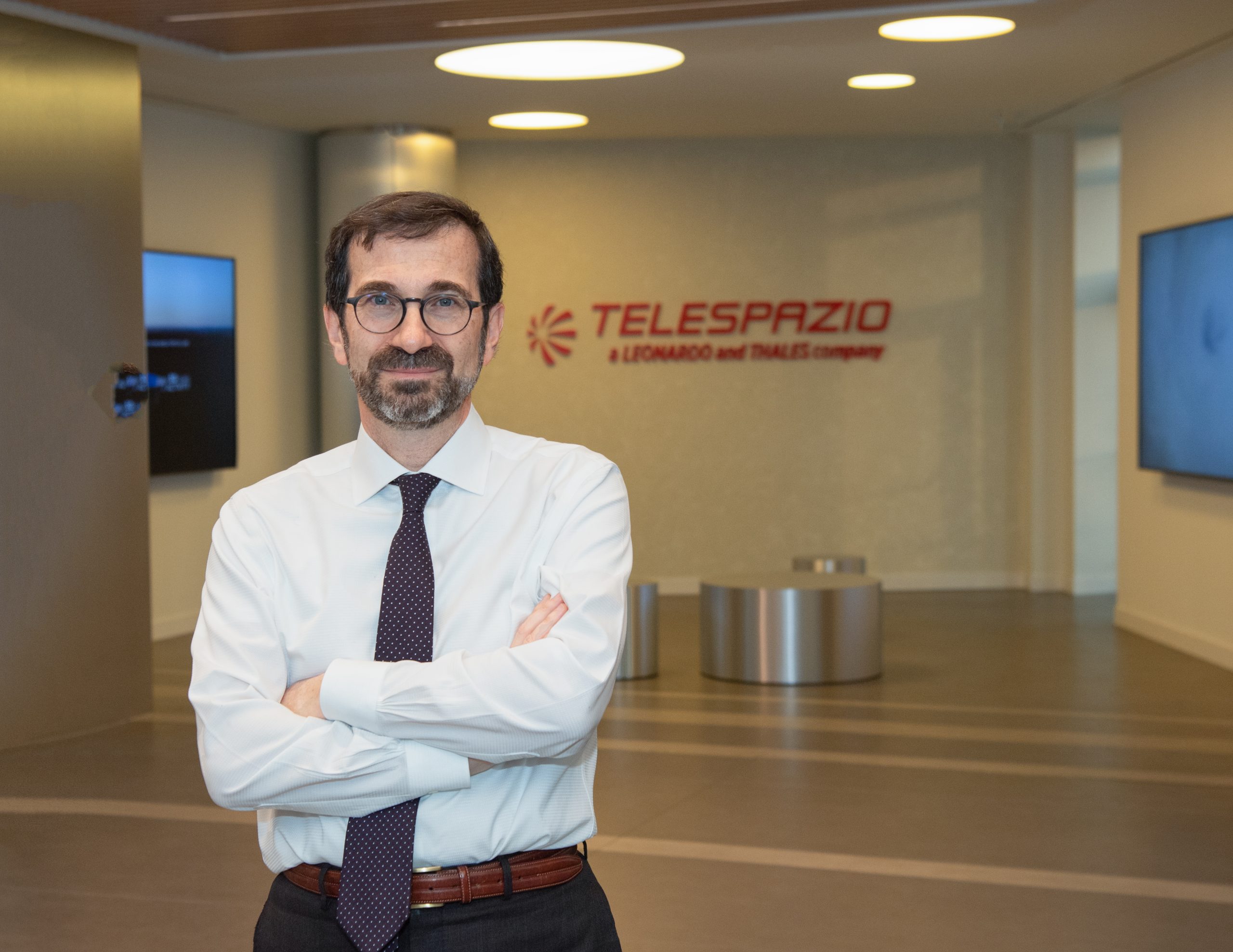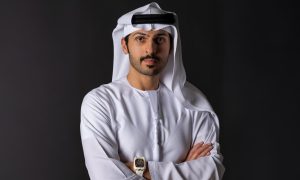Telespazio is a joint venture between Italian aerospace and defence company Leonardo and French multinational electronics company Thales and is one of the world’s leading providers of satellite solutions and services. At the heart of Telespazio’s technical and innovative strategy is 30-year Telespazio veteran Marco Brancati, Chief Technology & Innovation Officer, who is keeping the large company as inventive as any hot start-up.
An illustrious beginning
Telespazio, based in Rome, has a rich history in the space industry, having been involved in the very first launches of Italian satellites since 1964 and having worked with major aerospace companies such as Lockheed and Boeing. Today, Telespazio has over 3,000 employees across its subsidiaries and joint ventures and, together with Thales Alenia Space, is a key player in Space Alliance, offering a complete range of space services.
Amid the fast-evolving technological landscape, Telespazio’s Chief Technical and Innovation Officer Marco Brancati is at the forefront of driving the company’s innovative strategy. With more than three decades of experience at Telespazio, Brancati assumed his current position in 2016, inspired by the growing potential of new and exciting technologies. “With growing new technologies, I see the endless possibilities that they can offer, and I’m excited to be leading the charge to bring these innovations to fruition, which is why I took the CTIO opportunity,” Brancati explains. Under his leadership, Telespazio is poised to continue its legacy of trailblazing solutions and transformative technologies in the space and satellite service industries.
Earth and sky
Telespazio works to bring space closer to Earth and does this primarily through ground infrastructures and operations. Ground systems for space missions are made up of several primary components including ground stations, satellite and mission control centres, networks, and launch facilities.
Brancati has seen Telespazio’s growth over the years, characterised by the acquisition of companies specialised in the three areas of space activities: telecommunications, geoinformation, and navigation. “We have continued to acquire strategically, so we did specialise in these key ground areas,” Brancati says.
Today, with the rapid growth of new technologies, Brancati leads the development of increasingly hybrid services. “We can now combine the three areas [of activities] supported by artificial intelligence and cybersecurity,” he says. For example, Telespazio used artificial intelligence to integrate satellite data, drone data, and information from the web in order to isolate new outbreaks of COVID-19, while monitoring areas where people congregate, combining both telecommunications, geoinformation, and navigation techniques in one offering.
Looking to the future
But despite being laser-focused on providing quality legacy services, Brancati has helped Telespazio expand to new frontiers. “One of the new areas of growth for Telespazio is on orbit servicing, which involves extending the life of space assets through, for instance, refuelling and repairs,” Brancati explains. Looking ahead, Brancati and the company have identified seven key areas for growth over the next three to five years. These include providing telecommunication and navigation services over the moon surface, developing the competencies for digital twin models, resilient position, navigation, and timing (PNT) applications, mini and micro launchers, ground infrastructures, solutions to improve space domain awareness and growing through helping start-ups.
“All over the world, start-ups are targeting space as an environment to develop new services.”
“And so of course for large established companies, it is absolutely mandatory to cooperate with smaller companies and with start-ups in order to stay fast.” Because of this conviction, Brancati has Telespazio paying increasing attention to start-ups and formulating a start-up competition named Telespazio Technology Contest (#T-TeC), now in its fourth edition. The company reaches out to academia programmes, proposing some of its seven areas of growth and looking for researchers, Ph.Ds, and associated start-ups to develop solutions in these areas.
Risk and reward
“Innovation is such a core component of Telespazio that it is one of our two supply sides, ‘development and research’,” Brancati says. Telespazio uses this supply side to identify new business opportunities, although Brancati acknowledges this comes with a degree of risk. “When you look after innovation, you need to assume that there is the possibility that something goes wrong. If you don’t accept such risk, you will never identify new businesses.”
Conversely, the first supply side for Telespazio is the physical services products to supply their ground assets. For example, one of Telespazio’s most important services is telecom via satellite, which includes the very small aperture terminal (VSAT) network, providing services for institutional or private corporate satellite networks all over the world. The maintenance of these services by reliable suppliers enables Telespazio to go above and beyond in providing services to clients and maintaining their reputation for quality. “Our reputation for excellence is built in part on working with a range of suppliers, including some that are not space-specific, which provides us wider capabilities and helps the company innovate,” Brancati explains.
Some suppliers are so close to Telespazio that they even cross over into both partners and customers. For example, as Telespazio is a ground service provider, it does not own its own satellites. But there are instances when Telespazio can configurate a partner’s satellite for clients as well as provide them with the appropriate ground assets and operations. “With these hybrid relationships with suppliers, we can complement each other and support each other’s business while providing first class services,” describes Brancati.
Onward and upward
Now is an exciting time to be in space tech. Brancati highlights the advancements in artificial intelligence, machine learning, big data and cybersecurity; through these, he says, “there are big plans for growth in the next 3-5 years.” Additionally, Brancati’s role involves maintaining trusted partnerships with governments and defence agencies at a time when more and more government focus is on space. For example, the Galileo project (GNSS) went live in 2016, spending €10 billion on a high-precision positioning system so European political and military authorities do not have to rely on American or Russian localisation systems.
But changing times also require changing business practices. “Digitization is essential to reformulate and innovate offers in terms of services,” Brancati says. “The geoinformation market is based more and more on data and less on images. So the role of platforms is to process information through the use of algorithms based on artificial intelligence.” The as-a-service concept is gradually gaining ground: “If in the past the competition was on the infrastructural front, the model is changing with a shift towards the service component”, Brancati says, supported by the entry into the space market of players with great financial capabilities—namely, companies like SpaceX (Elon Musk) and Amazon/Blue Origin (Jeff Bezos) and the rise of Venture Capital.
All of this innovation is for the benefit of society, and while it may seem farfetched, space innovation acts as a launch pad for many services and products used every day in society, also supporting its relevant sustainability. Ultimately, Telespazio strives to bridge the gap between space and Earth by bringing them closer together through its technological solutions. And it is no doubt that with Brancati at the head of innovation, Telespazio will continue to innovate as it has done for 60 years.
Click here to read and download the full article.







